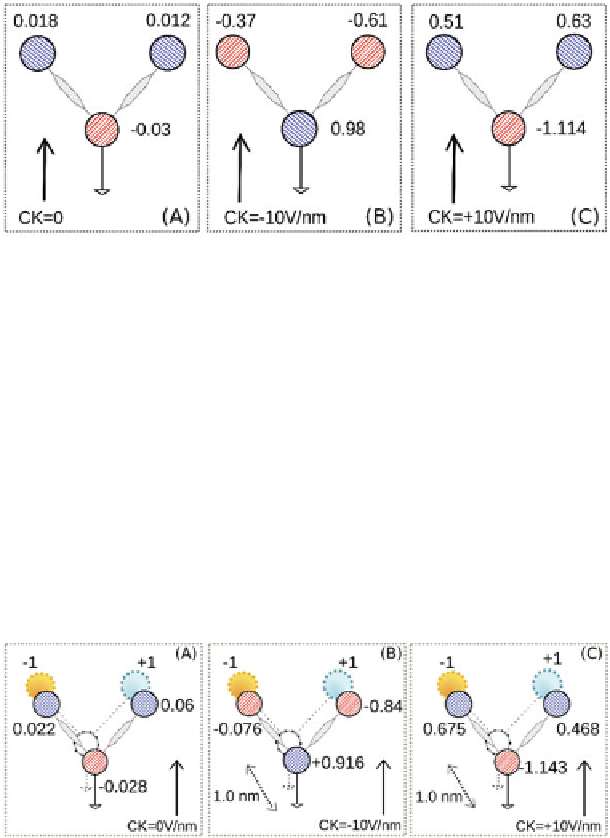Information Technology Reference
In-Depth Information
Fig. 29.
Charge distribution of a clocked bis-ferrocene molecule.
is similar to the charge distribution of an oxidized molecule at the equilibrium,
since the working dots have a similar amount of charge, while the carbazole of
the clocked neutral molecule compensates the neutrality of the cell.
To completely characterize the effects of the clock, a polarized driver was
introduced during the simulations, in both the logic state 1 and 0. The results
are reported in Fig.
30
and show that the clocked molecule reacts better than the
non clocked one, since in the former case the displacement of charge between the
working dots is more pronounced then in the latter. For this reason, the clock
signal could be used to enhance the charge localization inside a neutral molecule
and, so, to help the interaction between neighboring cells.
Fig. 30.
Charge distribution of a clocked bis-ferrocene molecule in presence of a polar-
ized driver.
Finally, thanks to this analysis it was possible to evaluate the properties of the
bis-ferrocene molecule as QCA device. As shown by the results discussed here,
the molecule is a suitable candidate for QCA technology, especially in its oxidized
form. In fact, the oxidized bis-ferrocene exhibits a good charge confinement when
a write-in signal is applied and it reacts properly to a polarized driver. Regarding
the neutral bis-ferrocene, its performance are lower than the oxidized version, but
the application of a clock signal could enhance the charge confinement inside the
molecule and then the interaction with a nearby molecule or a polarized driver.

Search WWH ::

Custom Search